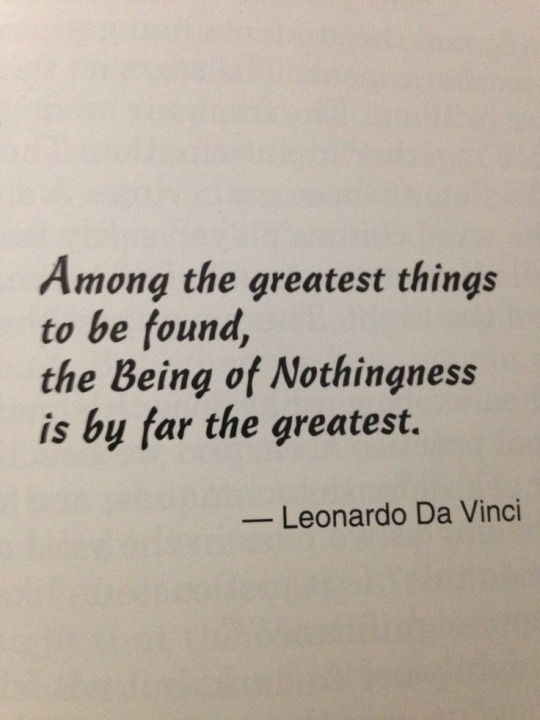#zenmind
Explore tagged Tumblr posts
Text
🌓 Embracing the Duality Within: Finding Balance 🌓

In the intricate tapestry of our minds, a profound dance of duality unfolds. Much like the timeless concept of Yin and Yang, our inner world is a blend of light and shadow, good and evil. It's essential to recognize that these dualities are interconnected, each influencing the other.
🌞 The 'yang' represents our brighter aspects, including love, joy, and kindness.
🌚 The 'yin' symbolizes our darker facets, such as fear, doubt, and imperfection. Just as the sun and moon depend on one another, so do our contrasting qualities.
Acknowledging and accepting our 'yin' side doesn't make us malevolent; it makes us complete. Our shadows teach us valuable lessons and lead to personal growth and self-awareness.
🌗 To achieve inner harmony, we must venture into the depths of our consciousness, confronting our fears and embracing our imperfections. It's through this acceptance that we find transformation and enlightenment.
Celebrate the beautiful yin and yang within you, for in their embrace, you discover your true self. To be in perfect harmony, the yin and yang must find balance in each of our individual chakras. Want to know if your chakras are perfectly healthy and balanced? Click HERE for a free energy check.
#MindfulLiving#InnerPeace#SelfAcceptance#HarmonyWithin#BalanceOfLife#EmbraceYourShadows#SpiritualJourney#SelfDiscovery#PositiveVibes#WellnessWednesday#DailyInspiration#ZenMind#PositiveMindset#Enlightenment#SoulSearching#PersonalGrowth#MindfulnessMatters#LifeBalance#LoveYourself#InnerStrength#WisdomSeeker#MindBodySoul#GoodVibesOnly#EmbracingChange#DiscoverYourself#InnerJourney#LifeLessons#energy#spiritual#chakras
14 notes
·
View notes
Text

I Am Gay and am in Support for Gay AND Straight Japanese Peoples’ Rights and Liberties! The Reason I see Why Japanese Conservatives are against Gay Marriages is that the population of Japan’s Lovely People is decreasing Substantially while other countries like Communist China, North Korea and Russia Might be trying to invade Japan while the United States still Militarily Occupies Japan after the United States evilishly dropped 2 Atomic Bombs on over 100,000 innocent Japanese grandmothers, mothers, children, and the disabled in Nagaski and Hiroshima who were being told what to do by their Japanese government (it’s like the United States dropping 2 Atomic Bombs killing Millions of innocent Cubans victimized by Communist government in Cuba Just to get rid of Communism in Cuba). However — I believe that Japanese Conservatives COULD Agree with Gay and Lesbian Japanese citizens by Cutting Taxes for Japanese Foods Businesses to increase foods supplies and lower foods prices in Japan so that Japanese women can afford child raising and so that abortions would no longer be necessary. Tax Credits for Japanese Gays and Lesbians And In Vitro Fertilization Clinics COULD Speed-Up Rises in Japanese Populations in Japan as more Straight And Gay Couples can afford raising Healthiest Japanese Babies! 🌳🧘🏻♂️🧘🏻🧘🏻♀️🧘🏽♂️🧘🏽🌳🌤️🌏🌎 Remember — Cutting Taxes for Healthcare Clinics will lower costs and create many more healthcare clinics! #Longevity Let’s Go Hot Sexy 120-Year-Old Japanese Grandmas and Grandpas! Cutting Taxes for Japanese Construction Companies can lower costs and create many more Man-Made Japanese Islands and Continents! #ILoveZen #ILoveBuddha #IAmAProudBuddhist #ILoveBuddhists #ILoveBuddhism 🧚🏻🧚🏻♀️🏳️🌈🇯🇵🇰🇷🇨🇳🇨🇺🇺🇸🍟💵🛍️
#zen meditation#zen awakening#buddhist awakening#buddhist art#zen mind#zenmind#zenmasters#zen master#zen moments#zen buddhism#zen buddhist#proud buddhist#gay buddhist#buddha#tibetan buddhism#buddhism#buddhist#wplg local 10#wplglocal10#wsvn#cubansalsa#cuba#cuban cigars#noticias de cuba#cuban sandwich#miami cuban#cubano#cubana#cubatravel#cuban
4 notes
·
View notes
Text
Sometimes, the loudest strength is the quietest voice within. In stillness, we don’t lose ourselves—we uncover who we truly are. Rise not with noise, but with knowing. 🌿✨
youtube
#MindfulLiving#InnerStrength#QuietPower#MentalWellness#ClarityInSilence#PersonalGrowth#SelfDiscovery#ZenWisdom#WabiSabi#JapanesePhilosophy#StillnessAndStrength#MonoNoAware#InnerPath#QuietWarrior#InnerPeace#StillnessIsPower#Motivation#HealingJourney#QuietStrength#MindfulnessMatters#InnerJourney#SelfAwareness#BraveInStillness#RiseInSilence#SoulGrowth#PeaceWithin#WabiSabiWisdom#ZenMind#WayOfNature#Kokoro
0 notes
Text

#BeingOfNothingness#InnerStillness#ExistentialWisdom#SpiritualAwakening#MindfulLiving#PhilosophyOfBeing#ZenMind#SpiritualJourney#ConsciousnessExploration#NothingnessAndBeing
0 notes
Text
Zen State of Mind: Achieving Clarity Technique: Zen state of mind refers to a mental space characterized by deep peace, clarity, and heightened sense of awareness.
0 notes
Audio
(Kali Franciska Von Koch)
Inom meditationen är och förblir vi nybörjare, det ligger i sakens natur. Därför att vi utgår ifrån nuet, det som finns här och nu. Vi uppmärksammar andningen i nuet och vi börjar om i nuet när vi förlorar vår närvaro och uppmärksamhet. Här är ett så kallat dharmatal fårn en endagsretreat jag höll hösten 2023. Kanske kan det vara till glädje för någon. Inspelat på IphoneSE med extern mikrofon. Trevlig trettonhelg! Värme Franciska (Kali)
0 notes
Text
#MindfulnessMeditation#StressReduction#CalmInTheChaos#MeditationJourney#InnerPeace#MindfulLiving#StressRelief#ZenMind#MindfulMonday#BreatheInCalm#StressFreeLife#SelfCare#RelaxationTechniques#MindfulAwareness#WellnessWednesday#MindfulMoments#PeacefulMind#MindfulnessPractice#StressLess#FindYourCalm#MeditationForAll#SerenityNow#MindfulMood#StressManagement#MindfulJourney
0 notes
Text
Zen Buddhism Part Two
Karma
Karma means intended action, and is a dynamic concept. It is not fate or predestination, but a consequence of what has gone before. In other words, you are now in circumstances because of your thoughts and decisions, and this is an on-going process. That is, new actions create new Karma. Intention is a major part of Karma. If you come home and accidentally trip over the dog and hurt the animal, this is not intended and has no effect. However, after a hectic day, you come home and kick the poor dog, then negative Karma is generated. All the combined intended actions add up to what you are now. Karma is the reaping of past actions, but also offers the possibility of determining our own future with our actions and thoughts today. This means that no future event is locked in
Obviously, we also are subject to non-karmic forces such as the ageing of our bodies. And there are circumstances, which are natural and also affect our lives. But in addition to that, the Buddha said that we are subject to this karmic effect where the ethical actions and thoughts we have will have a positive effect on the future and on our spiritual development.
Human beings are constantly giving off physical and spiritual forces in all directions. In physics we learn that no energy is ever lost; only that it changes form. This is the common law of conservation of energy. Similarly, spiritual and mental action is never lost. It is transformed. Thus Karma is the law of the conservation of moral energy.
Rebirth
There is a subtle difference between rebirth and reincarnation as expounded in Hinduism. Buddhism rejects the theory of a transmigrating permanent soul, whether created by a god or emanating from a divine essence.
Rebirth is not a simple physical birth of a person; for instance, John being reborn as a cat in the next life. In this case John possesses an immortal soul which transforms to the form of a cat after his death. This cycle is repeated over and over again. Or if he is lucky, he will be reborn as a human being. This notion of the transmigration of the soul definitely does not exist in Buddhism.
In Buddhism, rebirth is part of the continuous process of change. In fact, we are not only reborn at the time of death; we are born and reborn at every moment. This too, like many other Buddhist teachings, is easily verifiable by reference to our own experience and by reference to the teachings of science. For instance, the majority of the cells in the human body die and are replaced many times during the course of one’s life. Even those few cells which last one’s entire life undergo constant internal changes. This is part of the process of birth, death and rebirth. If we look at the mind too, we find that mental states of worry, happiness and so forth are changing every moment. They die and are replaced by new states. So whether we look at the body or the mind, our experience is characterized by continuous birth, death and rebirth.
In Buddhism we do not believe in an abiding entity, in a substance that trans-migrates. We do not believe in a self that is reborn. This is why when we explain rebirth; we make use of examples which do not require the transmigration of an essence or a substance. For example, when a sprout is born from a seed, there is no substance that transmigrates. The seed and the sprout are not identical. Similarly, when we light one candle from another candle, no substance travels from one to the other, and yet the first is the cause of the second. When one billiard ball strikes another, there is continuity, the energy and direction of the first ball is imparted to the second. It is the cause of the second billiard ball moving in a particular direction and at a particular speed. When we step twice into a river, it is not the same river and yet there is continuity, the continuity of cause and effect. So there is rebirth, but not transmigration. There is moral responsibility, but not an independent, permanent self. There is the continuity of cause and effect, but not permanence.
No-self
All life, yours, mine, your family and friends, is like a flowing river. While it may appear the same when you look at a river, each moment is different and every view of the river is different. Nothing in nature is what it was the moment before. Every living thing is in a continuous state of flux. As we live, we take on both positive and negative habits and we cling to ideas which we associate with "our permanent selves". But our permanent self is a myth, and once we learn that, we can look beyond the need to have life stay the same. Each person has a physical body which is dependent on food and warmth, and develops in response to those inputs and to the ageing process. Our feelings change with our mood and our time in life and as a direct result of perceptions which comes from what we see and hear around us. We make decisions based on our feelings and perceptions
#ZenBuddhism#Meditation#Mindfulness#ZenPhilosophy#ZenTeaching#BuddhistPractice#Enlightenment#ZenMaster#ZenMind#ZenLife#ZenKoan#Zazen#Buddhism#Spirituality#InnerPeace#BuddhistWisdom#ZenArt#BuddhistMeditation#ZenPrinciples#ZenWay#today on tumblr
0 notes
Text
"Zazen: Cultivating Spiritual Harmony Through the Art of Meditation"

Prelude
In the pursuit of spiritual fulfillment, individuals across cultures and epochs have sought various practices to attain inner peace and enlightenment. Among these, Zazen stands as a cornerstone of Zen Buddhism, offering a path to cultivate mindfulness, awareness, and spiritual harmony. Rooted in ancient traditions yet resonating with contemporary seekers, Zazen beckons practitioners to embark on a journey inward, to observe the workings of the mind and unravel the mysteries of existence. This essay delves into the essence of Zazen, exploring its spiritual significance and transformative power.
Origins and Principles:
Zazen finds its roots in the teachings of Siddhartha Gautama, the historical Buddha, who attained enlightenment while meditating under the Bodhi tree. It was later developed and refined within the Zen tradition, particularly by the legendary Bodhidharma, who brought Zen Buddhism to China in the 6th century CE. At its core, Zazen embodies the principles of simplicity, presence, and non-attachment. Sitting in a stable and comfortable posture, typically cross-legged on a cushion, practitioners engage in focused breathing and observation of their thoughts and sensations.
The Practice:
The practice of Zazen revolves around the act of sitting in stillness, with an alert yet relaxed posture. Eyes are usually kept partially open, gazing downwards to maintain awareness without fixation. The breath serves as an anchor, guiding attention away from distractions and into the present moment. As thoughts arise, practitioners are encouraged to acknowledge them without judgment or attachment, allowing them to pass like clouds in the sky. This process cultivates a deepening sense of mindfulness, wherein one becomes intimately acquainted with the fluctuations of the mind.
Spiritual Significance:
Zazen holds profound spiritual significance within the Zen tradition, serving as a direct means of accessing the true nature of reality. Through sustained practice, practitioners come to recognize the illusory nature of the ego and the transient nature of phenomena. This realization leads to a profound sense of interconnectedness and liberation from suffering, as articulated in the Four Noble Truths of Buddhism. By transcending the dualities of self and other, subject and object, practitioners awaken to the boundless expanse of pure awareness.
The Concept of Mu:
Central to Zazen practice is the contemplation of the koan "Mu," which encapsulates the ineffable nature of reality. Derived from the Chinese word for "nothingness" or "emptiness," Mu challenges practitioners to grapple with the ultimate question of existence. When posed the question "What is Mu?", practitioners are invited to go beyond conceptual thinking and directly experience the emptiness from which all phenomena arise. In this way, Mu serves as a catalyst for profound insight and spiritual awakening, transcending the limitations of language and intellect.
Integration into Daily Life:
Beyond the confines of the meditation cushion, Zazen extends into every aspect of daily life, fostering a seamless integration of practice and experience. The mindfulness cultivated in meditation permeates mundane activities such as walking, eating, and interacting with others. Each moment becomes an opportunity for deepening awareness and presence, transforming ordinary tasks into sacred rituals. This embodiment of Zen principles in everyday life is exemplified by the Japanese concept of "samu," or mindful work, wherein even the simplest actions are imbued with spiritual significance.
The Role of the Teacher:
In the Zen tradition, the guidance of a skilled teacher or "roshi" is considered essential for the deepening of Zazen practice. Through direct transmission and personal instruction, the teacher imparts wisdom and insight, illuminating the path for the practitioner. In the intimate setting of the Zen monastery or "zendo," the teacher-student relationship forms the heart of the spiritual community, fostering a sense of camaraderie and mutual support. It is through this lineage of transmission that the teachings of Zazen are passed down from generation to generation, preserving the integrity of the tradition.
Challenges and Pitfalls:
Despite its profound benefits, Zazen practice is not without its challenges and pitfalls. The restless nature of the mind often leads to distraction, doubt, and discomfort during meditation. Practitioners may encounter periods of resistance or frustration as they confront deeply ingrained habits and conditioning. Furthermore, the egoic tendency to grasp for results or spiritual attainments can hinder genuine progress on the path. Yet, it is precisely through these struggles that true transformation occurs, as practitioners learn to embrace the full spectrum of human experience with compassion and equanimity.
Wrap-Up:
In conclusion, Zazen stands as a timeless and universal practice for cultivating spiritual harmony and awakening to the true nature of reality. Through the simple yet profound act of sitting in stillness, practitioners embark on a journey of self-discovery and liberation. Rooted in ancient wisdom yet relevant to contemporary life, Zazen offers a refuge of peace amidst the turbulence of the modern world. As the Zen master Dogen famously said, "To study Buddhism is to study the self. To study the self is to forget the self. To forget the self is to be awakened by all things." In this spirit, may the practice of Zazen continue to illuminate the path of awakening for generations to come.
#ZazenMeditation#ZenPractice#SpiritualHarmony#InnerPeace#MeditationJourney#MindfulnessPractice#ZenWisdom#SpiritualAwakening#ZenMastery#MeditationArt#ZenMindfulness#CultivateInnerPeace#ZenSpirituality#ZazenLife#MeditationCommunity#ZenTradition#MindfulLiving#ZazenExperience#SpiritualGrowth#ZenWayofLife
1 note
·
View note
Text

See your thoughts as passing scenery on a train journey, neither clinging nor avoiding. 🚂💭🧘♂️ #MindfulObservation #ZenMind #InnerPeace
#quotes#queue#motivation#inspiration#inspiring#inspirational quote#motivational quote#positive#positivity#motivational#inspirational#affirmation#positive affirmation#words of affirmation#positive thinking#be kind#mental health#spilled ink#spilled words#spilled feelings#spilled emotions#spilled thoughts#self care#self love#love#spiritual#spirituality#spiritual life#spiritual growth#spiritual awareness
41 notes
·
View notes
Text
youtube
The 3-Second Personality Test (What Your Answer Reveals!) #quiz #psychology #test #personality by Mind Matrix This 3-second psychology test reveals your true personality type! Behavioral experts analyzed how small decisions expose your hidden traits. Discover if you're dominant, analytical, or ultra-adaptable - and what it means for your relationships! #personalitytest, #psychologytricks, #mindblown, #selfdiscovery, #behavioralpsychology, #viraltest, #psychologyfacts, #alphamindset, #overthinker, #zenmind, #trendingnow, #shortschallenge, #psychquiz, #hiddenpersonality, #quicktest instant personality test 3 seconds, psychology line cutting test, what your reactions reveal, hidden personality traits quiz, alpha beta omega personality test, psychology of confrontation, overthinker psychology test, zen personality traits, behavioral psychology quick test, journal of personality study, harvard psychology stress research, how people judge your personality, spot sociopath quick test, decision making psychology test, body language personality test, fast psychology assessments, what your choices say about you, conflict style personality test, psychology of adaptability, spotting personality types fast, subconscious behavior test, psychological stress indicators, personality psychology secrets, quick mind reading test, how psychologists analyze people, street smart psychology test, reaction time personality quiz, micro expression personality test, behavioral analysis quick quiz, psychology of first impressions via YouTube https://www.youtube.com/watch?v=HpzwlSBGWLQ
0 notes
Photo

tea ceremony with j
#tea#tea ceremony#meditation#mindfulness#bird#soulconnection#spiritual#zen#zenmind#healing#tea set#home#home inspiration#home interior#interior#interior design
17 notes
·
View notes
Text
In the quiet beyond thought, beyond striving, beyond self—there is a wholeness untouched by noise. No path, no destination, just being. When we stop searching, the truth that has always been within us gently rises like mist over water. 🌿🕊️
youtube
#MindfulLiving#InnerStrength#QuietPower#MentalWellness#ClarityInSilence#PersonalGrowth#SelfDiscovery#ZenWisdom#WabiSabi#JapanesePhilosophy#StillnessAndStrength#MonoNoAware#InnerPath#QuietWarrior#InnerPeace#StillnessIsPower#Motivation#HealingJourney#QuietStrength#MindfulnessMatters#InnerJourney#SelfAwareness#BraveInStillness#RiseInSilence#SoulGrowth#PeaceWithin#WabiSabiWisdom#ZenMind#WayOfNature#Kokoro
0 notes
Link
“ However, as a psychic counselor, I have one thing in my mind. All souls are important. No single soul is more important than the others. ”
#spiritualist#spiritualcoach#spiritual energy#psychic#florist#lifewithflowers#jetsetter#jetsetbabe#entrepreneruship#entrepreneur#businesswoman#consaltant#japanese#tokyo#zenmind#easternwisdom#japanesezen#aesthetic#phylosophy
1 note
·
View note
Text

Silver birch bark

1 note
·
View note
Photo

It's just peaceful right now. #zenmind #irvinelake (at Irvine Lake) https://www.instagram.com/p/CDwpA3nnYbe/?igshid=15h2sgr1oena4
1 note
·
View note